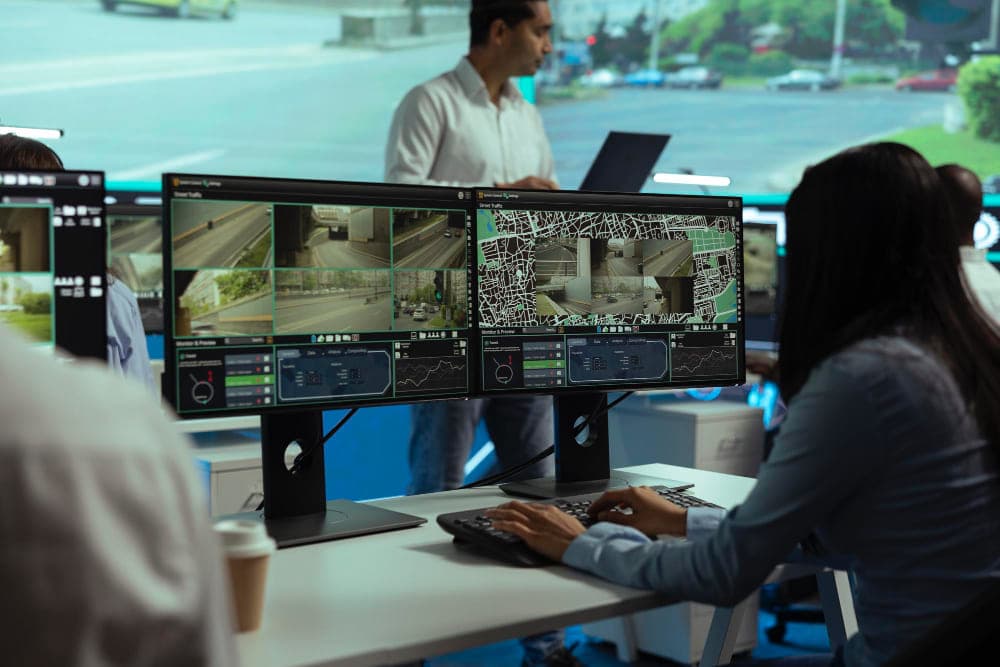7 Best Practices for Institutions to Enhance Exam Security

Ensuring exam security is vital in today’s tech-driven world. It goes beyond preventing cheating; it’s about safeguarding the credibility of the entire educational system. As more students turn to online testing, institutions must adopt robust security measures. Let’s take a closer look at it.
Why is Exam Security Important?
Exam security plays a crucial role in maintaining fairness and transparency. A secure exam environment ensures that:
Students are evaluated fairly based on their knowledge and skills.
The integrity of the academic process is upheld.
Cheating and other unethical practices are minimised.
Institutions maintain their reputation for delivering quality education.
Without proper exam security, institutions risk devaluing the achievements of their students and losing trust in their academic programs.
Best Practices for Enhancing Exam Security
1. CCTV Surveillance for Monitoring Exam Halls
CCTV surveillance is a game-changer, revolutionizing exam hall monitoring. The ability to have real-time observation through cameras deters cheating and helps maintain discipline. With constant monitoring, both students and staff are more likely to stay alert and adhere to the rules, knowing they're being watched. In cases where suspicious behaviour occurs, recorded footage can be reviewed to determine if any misconduct took place.
CamView, with its user-friendly interface, offers high-definition video monitoring with real-time streaming, providing institutions with a seamless solution for exam hall security.
2. Biometric Attendance: Ensuring Accurate Identity Verification
Student identity verification is one of the biggest challenges in exams. Inefficient and error-prone manual attendance systems can sometimes lead to impersonation or proxy attendance. To address this, biometric systems offer a modern solution. With fingerprint or facial recognition, these systems ensure that only the correct student is present for the exam.
Biometric attendance speeds up the process, allowing exams to start on time and eliminating the possibility of impersonation. TrustView, for instance, provides a quick and accurate way to verify student identities, ensuring that exams are attended by the right individuals while enhancing the authenticity of the entire process.
3. Randomized Seating: Breaking the Cheating Circle
Cheating often stems from students working together. A simple yet effective way to curb this is through randomised seating arrangements. By mixing up where students sit, it becomes harder for them to collaborate or pass answers to one another.
Institutions can use software to generate random seating, ensuring no student is consistently placed near friends or familiar faces. This method disrupts any pre-planned efforts to cheat and creates a fairer environment for everyone. It's a straightforward strategy that strengthens exam integrity.
4. Secure Exam Paper Handling and Storage
Another critical area in exam security is the handling and storing of exam papers. Before and beyond the exam hall, securing exam papers is critical. Institutions must ensure that exam materials are protected from leaks or tampering both before and after the exam. Proper protocols for the transportation and storage of exam papers help maintain confidentiality and trust.
Best practices include using tamper-proof envelopes, storing exam materials in restricted-access locations, and employing digital tracking systems to monitor the movement of papers. TrackView offers a comprehensive solution, allowing institutions to keep track of exam papers from the moment they are printed until they are distributed to students. This minimizes the risk of tampering and ensures that accountability is maintained throughout the process.
5. Proper Training for Exam Staff
Even with the most advanced technology, human oversight remains crucial in ensuring exam security. Invigilators and staff play an important role in spotting suspicious behaviour and enforcing exam rules. Proper training equips staff to manage exam protocols effectively and respond to emergencies, such as technical glitches or power outages.
Regular training sessions ensure that staff are prepared to handle the demands of exam security and are familiar with the technology in place. When staff are well-trained, they act as a powerful first line of defence against cheating.
6. Power Backup with Rented Generators
Exams are often disrupted by unforeseen events like power outages, especially in large halls or during online assessments. A sudden blackout can lead to confusion and provide an opportunity for dishonest practices. Institutions need to have reliable power backup solutions to prevent such disruptions.
Renting generators is a cost-effective way to ensure that exams proceed smoothly, even during a power failure. PowerView offers backup solutions tailored to institutions' needs, providing uninterrupted power to prevent delays and maintain the integrity of the exam process.
7. Use of Anti-Plagiarism Software
In the digital age, students have easy access to vast online resources, increasing the temptation to plagiarise assignments or exams. To combat this, institutions should use anti-plagiarism software to check students' submissions for originality.
These tools not only ensure that students are producing authentic work but also provide detailed reports that highlight any instances of copied content. By integrating anti-plagiarism software, institutions can promote academic honesty and maintain the credibility of their academic programs.
Conclusion
Ensuring the security of exams is vital for maintaining academic integrity and fairness. By implementing best practices such as CCTV surveillance, biometric attendance systems, power backup solutions, and secure paper handling, institutions can significantly reduce the chances of cheating and misconduct.
Technology plays an important role in enhancing exam security, and institutions must stay up-to-date with the latest advancements. Solutions like CamView, TrustView, PowerView, and others provide institutions with the tools they need to ensure that their exams are conducted smoothly and securely.
By adopting these best practices, educational institutions can not only protect the integrity of their exams but also uphold their reputation for delivering high-quality education.